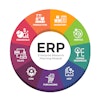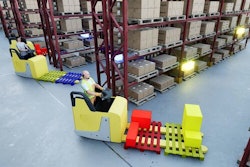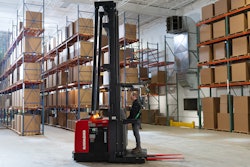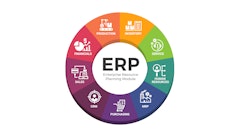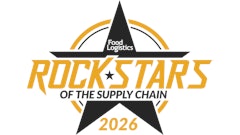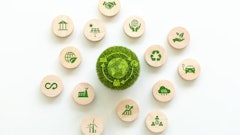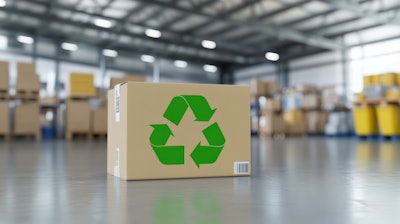
As e-commerce channels for food products grows and supply chains stretch to meet consumer demand, flexible packaging has become an increasingly strategic asset offering durability, space efficiency, and lightweight transport that can help reduce shipping emissions and improve logistics. Reclosable flexible packaging also contributes to protection and containment which helps to cut food waste, a critical environmental and economic issue.
For decades, flexible packaging has relied on petrochemical based polymers, which have delivered proven performance in helping protect food and extend its shelf life. Today, the flexible packaging industry is building on these advantages by introducing new materials such as bio-based polymers and post-consumer recycled (PCR) materials. These innovations not only reduce dependence on virgin fossil fuel resources, but also open new opportunities for responsible material sourcing. By integrating bio-based and PCR solutions alongside traditional polymers, the flexible packaging sector is advancing how durability, convenience, and environmental stewardship can expand the possibilities for food packaging.
Increasing circularity in flexible packaging
Material components like polyethylene (PE) have long been a go-to material for flexible packaging, offering reliable performance, and the versatility needed for a wide range of food product applications. These advantages make polymers like PE indispensable in creating flexible packaging solutions for modern food systems. At the same time, many brands are seeking ways to increase the value of legacy packaging formats by enhancing sustainable attributes. This effort recognizes the need for waste and carbon reduction, while underscoring the need for complementary material solutions.
In response, the flexible packaging industry is expanding its focus to help support viable, long-term sustainability goals, while maintaining the trusted performance consumers expect. A key strategy in this shift is embracing the circular economy, where packaging materials are kept in use for as long as possible. While a large portion of petroleum-based flexible packaging is designed to be recyclable, there are ways in which the industry is taking these efforts a step further.
Closing the loop on flexible packaging with PCR materials
The introduction of PCR materials is helping the flexible packaging industry maximize the positive impact of recycling.
PCR materials have already served an initial purpose as consumer items and have been recycled for use in new products, including food packaging. This distinguishes them from pre-consumer recycled materials, which typically involve scraps, trimmings, or rejects generated during manufacturing. While both forms of waste should be recycled, consumer waste is far more likely to end up in landfills, so diverting it into new packaging has a measurable impact on waste reduction.
The Waste Management Hierarchy provides a framework for circularity, prioritizing reduction, reuse, recycling, and composting, and PCR materials support several of these tiers, making them a smart choice for advancing flexible packaging solutions.
Using food grade PCR content in flexible food packaging helps reduce the demand for virgin materials, which may also lower the associated greenhouse gas emissions generated during raw material processing. Furthermore, many PCR packages can be recycled again, further extending their lifecycle and associated sustainability benefits. For food brands, PCR materials offer up a solution that combines performance and durability with an enhanced ethical footprint.
Renewable solutions for food packaging
While PCR materials offer an important path to extend the life of petrochemical-based plastics, some food brands are looking to reduce their reliance on legacy plastics altogether. Recognizing the finite nature of fossil fuels, many packagers are exploring bio-based polymers as a forward-thinking solution that allows food brands to consider alternatives.
Bio-based PE is produced from renewable sources such as plants, offering the same functionality and performance as traditional PE, but with a reduced carbon impact. Sugarcane, in particular, has proven to be an effective resource for the production of certain bio-based polymers. Once harvested, sugarcane can be processed into bioethanol, which can then be converted into ethylene, and ultimately, a polyethylene resin. The result is a bio-based PE that meets the performance standards required for food packaging while originating from a crop that naturally absorbs carbon from the atmosphere during its growth cycle.
It is important, however, to clarify a common misconception: bio-based does not automatically mean compostable. “Bio-based” simply refers to the origin of the material, while biodegradability depends on the structure of the polymer and its conditions of disposal. Since bio-based plastics closely mimic the characteristics of traditional PE, bio-based plastics can respectively be designed to be recycled through the same systems as their petroleum-based counterparts, making them easy to integrate into existing packaging and waste management infrastructure.
While bio-based packaging currently represents only a small percentage of the market, its potential should not be overlooked. By considering bio-based materials, food brands and packagers can adopt production efficient materials that also provide measurable carbon reductions.
It’s time for food brands to make the shift toward ethical materials sourcing
Overall, the future of food packaging will not be defined by a single solution. Instead, collective action across multiple fronts is necessary, and that is why the flexible packaging industry is innovating so quickly. These technologies represent more than just material substitutions; they support strategic decisions made to align with shifting consumer expectations, regulations, and corporate responsibility goals.
By making intentional choices and adopting flexible materials made from bio-based or PCR sources today, food brands can meaningfully reduce their environmental impact without compromising operational efficiencies, functionality, or safety. And together, we can set new standards for food packaging that not only protects product freshness but also prioritizes the planet and future generations.



